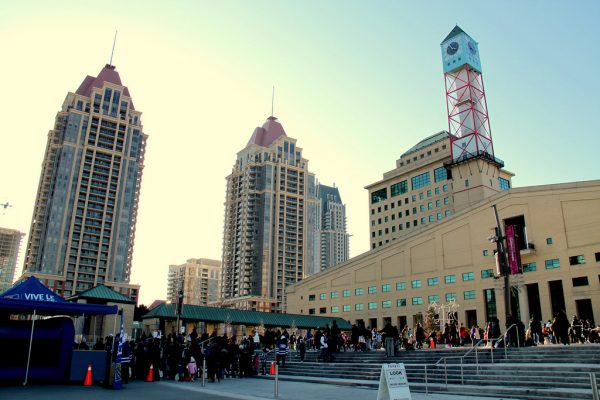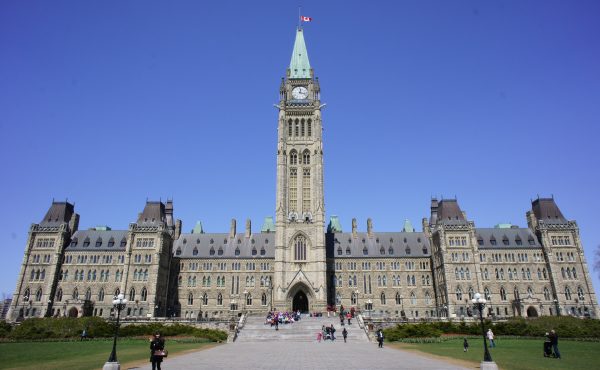Earlier this month, Mississauga mayor Bonnie Crombie was lauded for standing up against racism for the second time in a year. On Sunday Oct. 9, she filed a hate hate-crime complaint with Peel police after a local website published an article claiming she “is converting Mississauga into a dangerous Islamic war zone” so “they can kill her son just for being gay.”
The article comes a year after Mississauga council approved the zoning application for the Meadowvale Islamic Centre. During one council committee meeting, Crombie shamed Kevin Johnston, owner of the website that published the article, for distributing flyers denigrating the Muslim community and strongly petitioning against the construction of a mosque.
“Racism and flat-out lies have no place in Mississauga,” Crombie told the Toronto Star, in a statement that was widely celebrated as strong leadership.
Denouncing racism, however, is a reaction that occurs only after it has reared its ugly head. Crombie’s moves, both times, outwardly demonstrate her intention to tackle racism head-on. But they are little more than symbolic gestures, underscoring Mississauga’s preferred image of itself as a seemingly open and welcoming multicultural city. The fact is that her denunciations don’t address the reality that the Mississauga council continues to both govern and plan in a way that marginalizes its new immigrant communities, explicitly creating political spaces for racism to exist.
Like most multicultural cities, Mississauga embodies a great display of urban diversity, with 47% of residents reporting a mother language other than English. For many, it is an advertisement for global urbanism, where ethno-cultural pockets exist side by side, each with their own sounds, smells and signs.
But the city’s social diversity isn’t working as well as it may outward appear.
Municipal planning in Mississauga has reacted to changing demographics rather than adopt a proactive approach to building cohesive spaces to accommodate newcomer communities. Due to lack of space and haphazard planning laws, ethno-cultural businesses and institutions are forced to set up shop wherever they can find affordable spaces, such as the boxy mosque in the parking lot of the Dixie GO station or the Sikh temple operating in an industrial complex.
While Celebration Square, Mississauga’s primary public space, hosts a Halal food fair and Diwali festival events alongside Christmas and Chinese New Year, the wider city remains governed by the dominant culture values and norms, or what I call white regulation: English-language signage, and homogenous architectural standards. Even the most beautiful cultural buildings — i.e., a mosque, temple or community centre — skimp on design features for fear of upsetting the dominant perspective on architecture.
The municipal planning process is designed to allow the public to come forward with the most absurd claims against mosque proposals, for instance, including absurd allegations that minarets might be used for spying, while prayer speakers endanger local children. NIMBYism, with these planning applications, aren’t denounced as racism. But such objections have surfaced with seemingly every mosque proposal vetted by Greater Toronto city councils, going back to a 1995 study entitled “Making Space for Mosques: Struggles for Urban Citizenship in Diasporic Toronto” to more recent stories about the establishment of Markham mosque and, indeed, the still-in-progress Meadowvale Islamic Centre in Mississauga.
White regulation contains no space for change, nor does it have the means to embrace new voices and perspectives. And unfortunately, it continues to prevail with Mississauga’s all-white council. (The Toronto Star reported Monday that Brampton council, which includes only one non-white member, last week unanimously rejected a ranked-ballots proposal for local elections, despite concerns that vote-splitting disadvantages visible minority candidates.) Even token efforts, such as Mississauga council’s decision to set up a diversity and inclusion committee — its mandate is to “review city policies through a diversity lens to ensure they are meeting the needs of all residents in our community” — are lacklustre attempts to address the city’s multicultural realities. Why create a separate committee that specifically adopts a “diversity lens” when that should be the natural perspective honed and upheld by the city council of a multicultural city?
It’s easy to read Crombie’s legal challenge as a step forward for Mississauga, but it’s not enough. In fact, her gesture only perpetuates the false notion that dialogue is the solution to develop the perfectly integrated city. If anything, this latest instance of racism is proof that dialogue is not enough: Crombie had already publicly condemned earlier outbursts of racist behaviour, but now finds herself doing it again only a year later. The fact that the racist conduct re-emerged within such a short period seems to suggest that denouncing this kind of speech isn’t effective on its own.
What Mississauga needs to do is figure out how to be more proactive in countering these kinds of sentiments. A multicultural city needs planning policies that reflect its multicultural make-up. This means redefining how the city should look and function. What we need is for the City of Mississauga to reflect all the voices of its community and find ways of expressing those voices in its urban landscape.
That might anger the people who wrote and support the article, but it’s time to challenge white regulation. Diversity, after all, isn’t something to just be proud of. It’s a mode of existence. Once the city acknowledges that reality in both its politics and its municipal policies, racism will have far fewer places in which to take root.
Fatima Syed is an editorial fellow at the Walrus Magazine and a contributor to Subdivided: City-Building in an Age of Hyper-diversity. Follow her on Twitter at @fatimasyed401





2 comments
Hi Fatima,
Is there any indication as to why Mississauga’s Muslim community won’t help the mayor and say something like “The Muslim’s of Mississauga recognize and welcome the gay citizens we share our city space with, and support and defend their right to feel welcome in this city.”
I mean: is there a history of Muslims antagonizing the gay community, or gay members within their community at all?
I’m a little confused as to why Bonnie Crombie’s being left to defend he son, but Mississauga itself is at fault for not making Muslims feel welcome, because a majority of the city is white.
What a terrible and biased article. It is exactly these sentiments of wholesale changes at the community level that are fuelling anger in citizens afraid of rapid change. Just like projects need change management so do communities. We need to respect the existing culture, history and evolution of a city otherwise we get brexit or the election of people like Trump. Stop signs not in English? Religious calls on loudspeakers at the crack of dawn? Is this really what we want? Let’s preserve some of what makes our Canadian communities so special. For the record I voted for Trudeau, crazy about Crombie and can’t stand D.J. Trump!